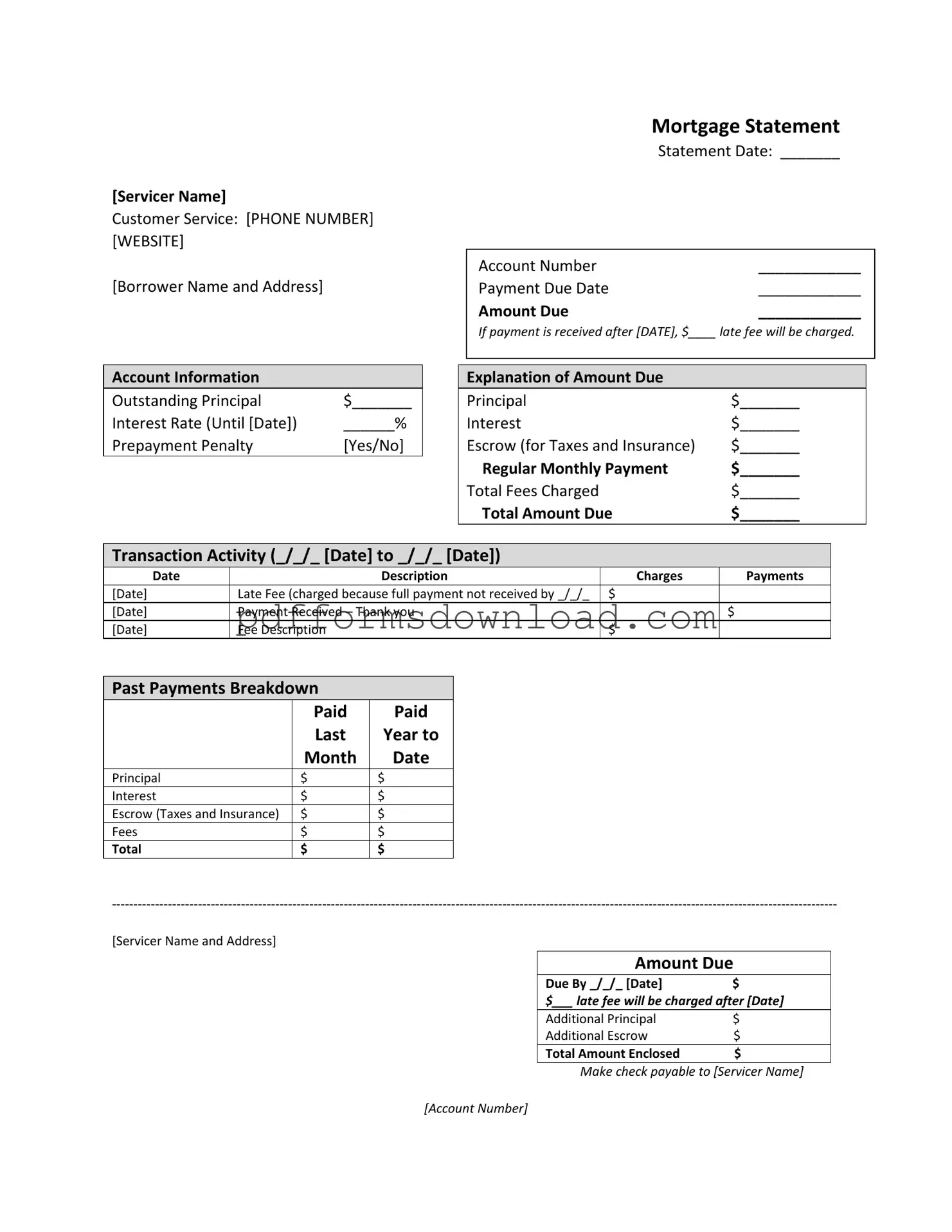What is a Mortgage Statement and why is it important?
A Mortgage Statement is a document provided by your mortgage servicer that outlines your loan details. It includes important information such as the outstanding principal, interest rate, payment due date, and the total amount due. This statement is crucial for keeping track of your mortgage payments, understanding any fees, and ensuring you stay current on your loan. Regularly reviewing your Mortgage Statement helps you manage your finances effectively and avoid potential penalties.
What happens if I make a partial payment?
If you make a partial payment, it will not be applied to your mortgage balance immediately. Instead, the funds will be held in a separate suspense account. This means that your mortgage remains unpaid until the total amount due is received. To have the funds applied to your mortgage, you must pay the remaining balance of the partial payment. It's important to be aware of this, as it can affect your account status and may lead to late fees if the full payment isn't made on time.
What are the consequences of missing a payment?
Missing a mortgage payment can lead to serious consequences. If you fail to make a payment by the due date, you may incur a late fee. Continued delinquency can result in additional fees and potentially lead to foreclosure, which is the loss of your home. It's essential to address any missed payments promptly to avoid these negative outcomes. If you're facing financial difficulties, consider reaching out for mortgage counseling or assistance as soon as possible.
How can I contact my mortgage servicer for questions?
You can reach your mortgage servicer by calling their customer service number listed on your Mortgage Statement. They can provide assistance with any questions regarding your account, payment options, or other concerns. Additionally, many servicers have websites where you can find resources and information about your mortgage. Make sure to have your account number handy when you call, as this will help them assist you more efficiently.
